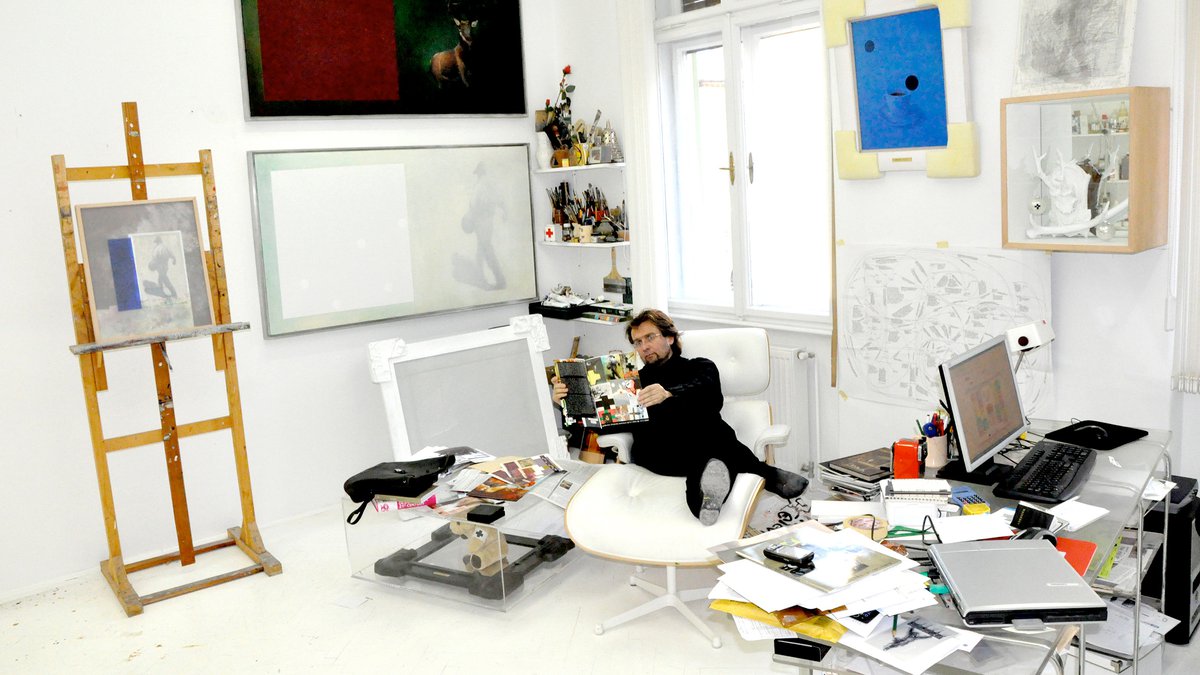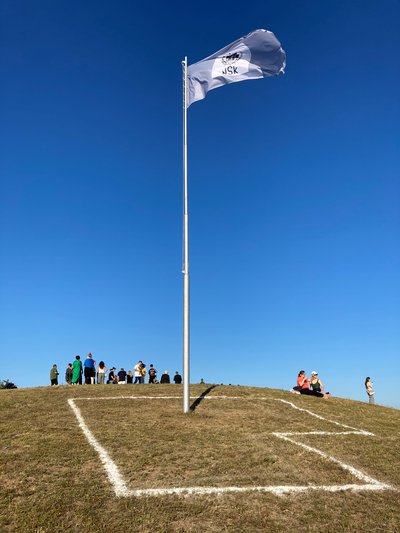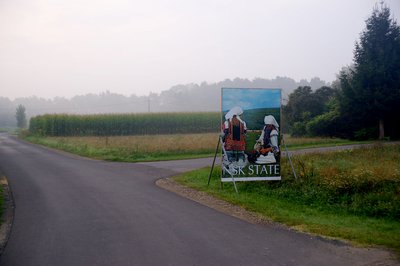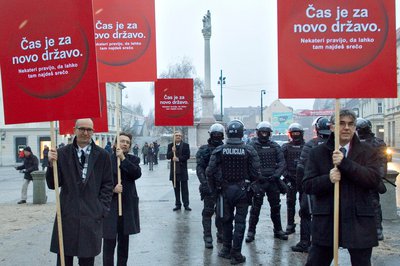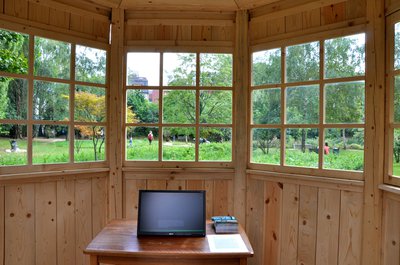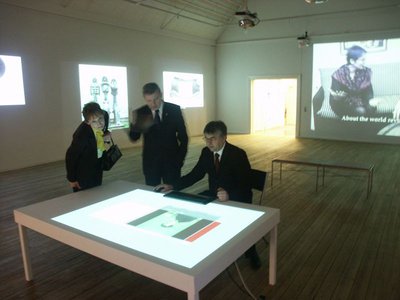Unfortunately, I do not belong to the generation who experienced the 1980s for themselves, and who thus witnessed an art field that had started opening itself to new phenomena, which also extended very directly into the social and political spheres of life. Roman Uranjek, who was part of this period, was one of the engines behind the creation of a new paradigm in the field, which today we know as the movement Neue Slowenische Kunst (NSK).
With his uncompromising and ceaseless work in the groups Irwin and New Collectivism, Roman Uranjek is undoubtedly an artist who cannot be overlooked when we speak about art and design and the relationship between society and art in Slovenia. And this is also why his forty-year career in art will surely remain inscribed in countless museums, biennials, and galleries, from New York to Taipei and from Moscow to Lagos, as well as numerous essays, books, and film documents. But Roman can hardly be summed up by a dry list of references at the start of an obituary. He is far more than that.
I first met Roman some fifteen years ago when he was the first person to arrive at the opening of an exhibition I had put together at the Škuc Gallery of work by Željko Jerman. I had, of course, seen him at art openings and around town, and I knew his work from exhibitions and catalogues, but we had never actually spoken to each other, so I was all the more surprised when he came up to me at the opening and said: “Kolega” – colleague, friend, pal – “could I ask you for a tour of the show?”
This was not just how our mutual journey began; today, I know that this was one of Roman’s great passions, something he was faithful to all his life. His tireless search for the new and sincere dialogue about art have undoubtedly shaped the way I view him. Not just in the reflections he offered as a critical interlocutor, but also as someone whose thinking about art drew connections between different people and spaces – whether this happened in passing at an art opening, in his studio, over lunch or supper, at a party, or when he posted one of his crosses on Instagram, left a message on the phone, or stood on a table and recited a poem by Ivan Volarič Feo. All these impulses were, in fact, a composite of Roman’s thoughts, which formed a picture of his view of art and, consequently, our view of him. His gestures were never merely everyday gestures but were always formed in relation to art and his experience with art. And this is what made dialogues with Roman such priceless moments, when the border between life and art became completely blurred.
His almost militant, fatal devotion to art was something I admired immensely, but at the same time I never entirely understood it. I sincerely think that it was something only Roman understood, and perhaps this is why, a few years ago, he lent me the book Memoirs of Hadrian, by Marguerite Yourcenar, which I have been reading constantly ever since. Even now, as always, I keep returning to a passage that in some way resonates with the dialogues I had with Roman:
Each to his liking; likewise each to his aim or his ambition, if you will, or his most secret desire and his highest ideal. My ideal was contained within the word beauty, so difficult to define despite all the evidence of our senses. I felt responsible for sustaining and increasing the beauty of the world.
When, on Saturday morning on Facebook, I saw Roman’s cross, collage and intervention in a work by the artist Goran Trbuljak, from an exhibition I had prepared three years ago in Rijeka, I thought this was just another one of our many wonderful “meetings” in art. And I thought, too, of course, that this was one of the hundreds of new crosses I would soon again be able to examine in his studio on Tavčarjeva Street. Roman’s self-portrait was carefully positioned on a black cross, which, as the ideal composition, had been affixed to Trbuljak’s white paper with the words “Borba se nastavlja papir gubi” (“The fight continues, the paper loses”).
A few hours later I learned that this was, indeed, one of the hundreds, the thousands, of crosses by Roman that will forever remain inscribed in the space of art, but also that it was his last. And that is when I understood that we had met and said goodbye in art. Just as kolega Roman would have wanted.
